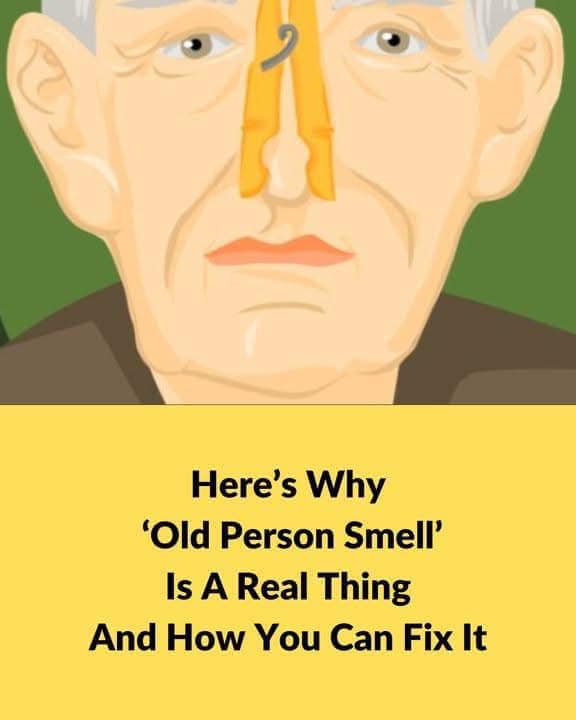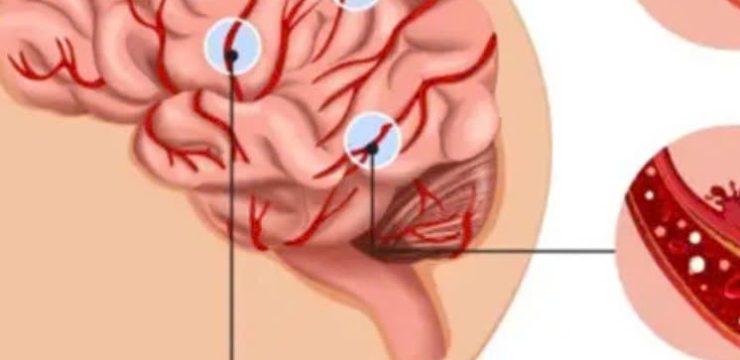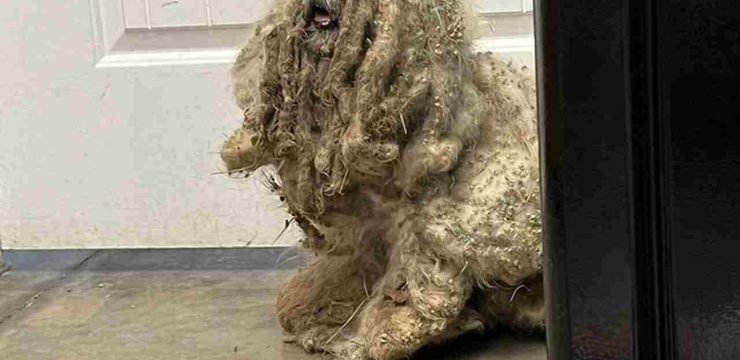Aging brings wisdom, experience, and stories worth treasuring, but it also comes with physical changes—some more noticeable than others. One of those changes is something many people have encountered but rarely discuss: the distinct smell often associated with older adults. Commonly referred to as “old person smell,” it’s a phenomenon backed by science, and yes, it’s entirely real.

You’ve likely noticed this scent in an elderly relative’s home, a nursing facility, or even while standing in line at a grocery store. It’s a slightly musty odor with subtle undertones of oil or grease, and it seems to linger no matter how clean someone might be. However, contrary to popular belief, this smell has little to do with hygiene. Instead, scientists have identified a specific compound responsible for it: 2-nonenal.
As we age, our hormone levels shift, and our bodies produce higher amounts of fatty acids in our skin. At the same time, our natural antioxidant levels begin to decline. Antioxidants typically prevent fatty acids from oxidizing, but with fewer antioxidants present, these fatty acids break down and create 2-nonenal. This compound is released through the skin, particularly around the chest and back areas, and remains there even after bathing.
A study published in the Journal of Investigative Dermatology in 2001 confirmed that older adults had higher concentrations of 2-nonenal on their skin and clothing compared to younger individuals. Another study in 2012 revealed that humans might have an evolutionary ability to detect this specific odor subconsciously. Much like animals, humans could once rely on scent to determine someone’s age, health status, or vitality.
@madamesweat Is “Old People Smell” a real phenomenon? #oldpeoplesmell #oldpeople #senior #seniors #smell #elder #elderly #nonenal #science #skin #bodyodor #microbiome #age #aging #old #nose #scent #fragrance #hygiene ♬ Chopin Nocturne No. 2 Piano Mono – moshimo sound design
Interestingly, the Japanese have long recognized this odor and even have a word for it: kareishu. In Japan, the cultural awareness of kareishu has led to an entire market of products aimed at combating it. Specialized body washes, deodorants, and even laundry detergents containing persimmon extract are believed to help neutralize 2-nonenal. Persimmon, in particular, is said to effectively eliminate the compound from the skin, leaving a fresher scent.
While specialized products can certainly help, there are practical steps that anyone can take to reduce or prevent the intensity of this odor. Regular exercise is one of the most effective ways to combat 2-nonenal. Physical activity helps regulate hormones, boosts metabolism, and reduces stress, all of which can minimize the production of fatty acids on the skin.
Another essential step is paying close attention to clothing hygiene. 2-nonenal can cling stubbornly to fabrics, and regular laundering of clothes—especially those worn frequently—can make a noticeable difference. Air-drying clothing in sunlight can also help eliminate lingering odors.
Diet plays a key role in skin health as well. Consuming foods rich in antioxidants, such as berries, leafy greens, and nuts, can counteract the oxidative process that produces 2-nonenal. Staying well-hydrated is equally important, as dehydration can dry out the skin and intensify body odors, including bad breath.
Fresh air is another underrated remedy. Opening windows and allowing ventilation in living spaces can prevent odors from becoming trapped in confined areas. Older adults, especially those who spend long hours indoors, should prioritize fresh air circulation to keep their homes smelling clean and airy.
While hygiene is certainly important, it’s not the sole factor in addressing old person smell. Daily showers, clean clothing, and deodorants help, but the odor originates from deeper physiological changes in the body. Understanding this can help reduce the stigma surrounding the smell and encourage more compassion and awareness.
Medications and illnesses can also contribute to this odor. Certain prescriptions may alter the body’s chemistry, while conditions like diabetes, liver issues, or kidney problems can produce distinct smells of their own. If the odor seems particularly strong or changes suddenly, consulting a healthcare professional is a good idea.
It’s also worth noting that aging—and everything that comes with it—is a natural part of life. While 2-nonenal might seem unpleasant, it’s simply one of many biological markers of growing older. What matters most is how we care for our elders and ensure they feel respected, loved, and valued.
So, does this familiar odor bother you? Were you aware that it had a scientific explanation? And what do you think about specialized products designed to neutralize it? Whether or not these products become mainstream, the key takeaway is that old person smell isn’t about poor hygiene—it’s a natural byproduct of aging.
By exercising regularly, maintaining a balanced diet, staying hydrated, and ensuring proper ventilation and clothing care, the odor associated with aging can be minimized. More importantly, understanding its cause helps us approach the topic with kindness and empathy. After all, aging is a privilege, and every stage of life deserves to be met with respect and care.





